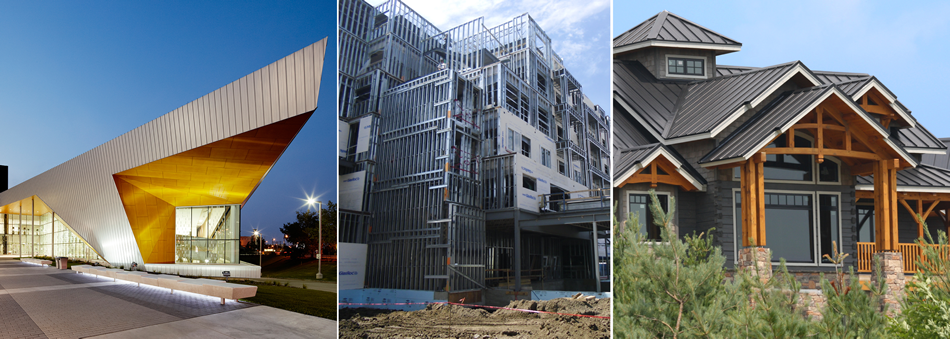Photo courtesy of SCS Global Services
According to certain “studies,” wood claims a smaller environmental footprint than any other major building material. However, a closer look at the facts reveals some significant inconsistencies with that claim.
This is our FINAL week featuring a myth about the sustainability of wood vs. steel. See here for the past 3 myths - #1,
#2 and #3. We really hope you enjoyed this series. You can check out our Sustainability Section for more information on sheet steel products and how they can contribute to your next sustainable building project.
MYTH: All wood construction products are certified as being sustainably harvested.
REALITY: The majority of forests in the U.S. do not meet the wood industry’s own sustainable harvesting standards.
- Eighty-one percent of forests in the United States are not certified, 11 percent are Sustainable Forestry Initiative (SFI®)-certified, and seven percent are Forest Stewardship Council (FSC®)-certified.(1) The sustainable harvest certification provided by the Sustainable Forestry Initiative has often been challenged as to whether it reaches the required threshold of sustainable forestry. SFI was created in 1994 by the paper and timber industry. A report on SFI by ForestEthics concludes in part:
- “SFI is funded, promoted and staffed by the very paper and
timber industry interests it claims to evaluate.”(2)
- “Of SFI’s 543 audits, up to the time of the report’s issuance,
there were no major noncompliance issues related to soil
erosion, clear-cut procedures, watershed issues, or chemical
usage.”(3)
- “SFI-certified logging practices are having a disastrous impact
on North American forests.”(4)
- In actuality, only seven percent of the forestland in the United States reaches the threshold of being considered sustainably managed.
(1) “Forest Certification Around the World: Georgia-Pacific, Sustainable Forestry and Certification,” Georgia-Pacific, 2014.
(2) “SFI: Certified Greenwash – Inside the Sustainable Forestry Initiative’s Deceptive Eco-Label,” a report by ForestEthics,
November 2010, p. 2.
(3) “SFI: Certified Greenwash – Inside the Sustainable Forestry Initiative’s Deceptive Eco-Label,” a report by ForestEthics,
November 2010, p. 9.
(4) “SFI: Certified Greenwash – Inside the Sustainable Forestry Initiative’s Deceptive Eco-Label,” a report by ForestEthics,
November 2010, p. 11.






